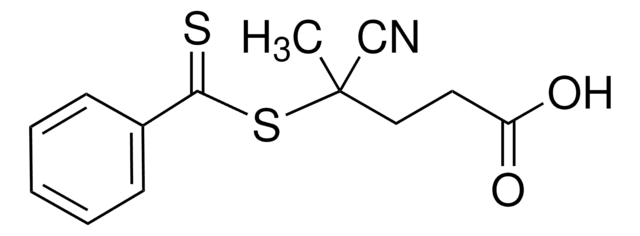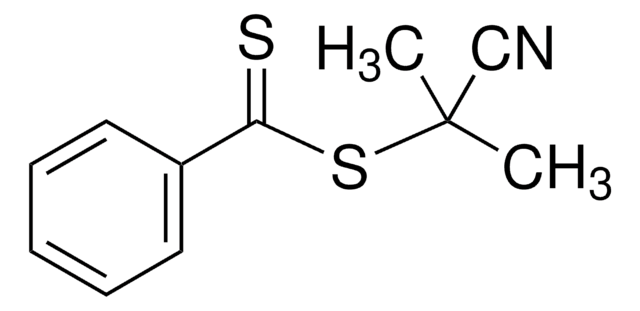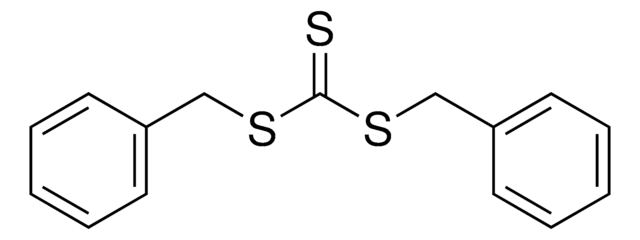763071
3,5-Bis(2-dodecylthiocarbonothioylthio-1-oxopropoxy)benzoic acid
98% (HPLC)
Recommended Products
Assay
98% (HPLC)
form
powder or crystals
mp
60-65 °C
storage temp.
2-8°C
SMILES string
CCCCCCCCCCCCSC(=S)SC(C)C(=O)Oc1cc(OC(=O)C(C)SC(=S)SCCCCCCCCCCCC)cc(c1)C(O)=O
InChI
1S/C39H62O6S6/c1-5-7-9-11-13-15-17-19-21-23-25-48-38(46)50-30(3)36(42)44-33-27-32(35(40)41)28-34(29-33)45-37(43)31(4)51-39(47)49-26-24-22-20-18-16-14-12-10-8-6-2/h27-31H,5-26H2,1-4H3,(H,40,41)
InChI key
GOLRGLNMILBFFI-UHFFFAOYSA-N
General description
Application
Signal Word
Warning
Hazard Statements
Precautionary Statements
Hazard Classifications
Eye Irrit. 2 - Skin Irrit. 2 - STOT SE 3
Target Organs
Respiratory system
WGK
WGK 3
Flash Point(F)
Not applicable
Flash Point(C)
Not applicable
Certificates of Analysis (COA)
Search for Certificates of Analysis (COA) by entering the products Lot/Batch Number. Lot and Batch Numbers can be found on a product’s label following the words ‘Lot’ or ‘Batch’.
Already Own This Product?
Find documentation for the products that you have recently purchased in the Document Library.
Articles
The modification of biomacromolecules, such as peptides and proteins, through the attachment of synthetic polymers has led to a new family of highly advanced biomaterials with enhanced properties.
Our team of scientists has experience in all areas of research including Life Science, Material Science, Chemical Synthesis, Chromatography, Analytical and many others.
Contact Technical Service







![4-Cyano-4-[(dodecylsulfanylthiocarbonyl)sulfanyl]pentanoic acid 97% (HPLC)](/deepweb/assets/sigmaaldrich/product/structures/204/925/30ae6ca0-5b0b-4963-a061-7e5e3d1a85af/640/30ae6ca0-5b0b-4963-a061-7e5e3d1a85af.png)

